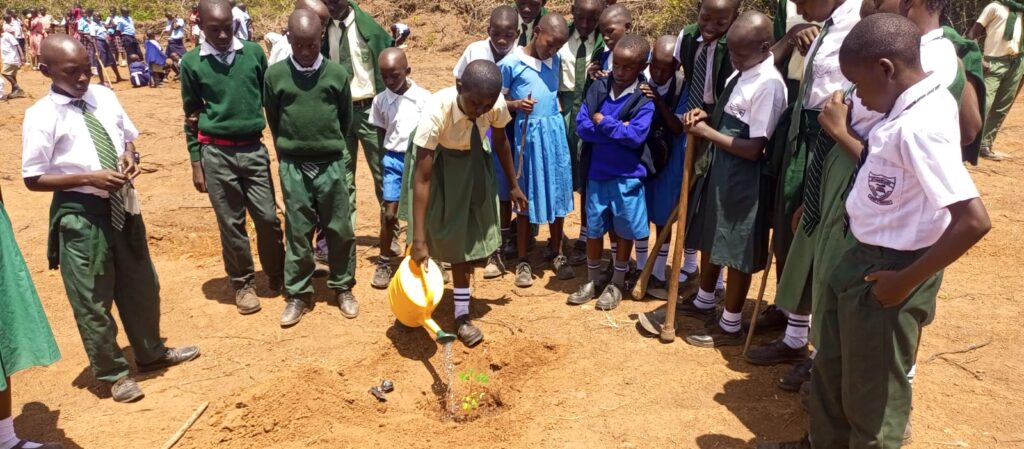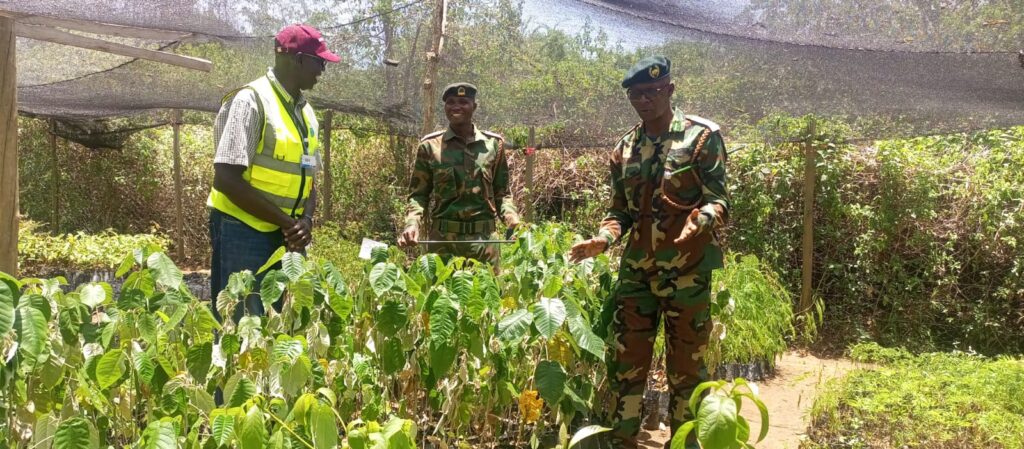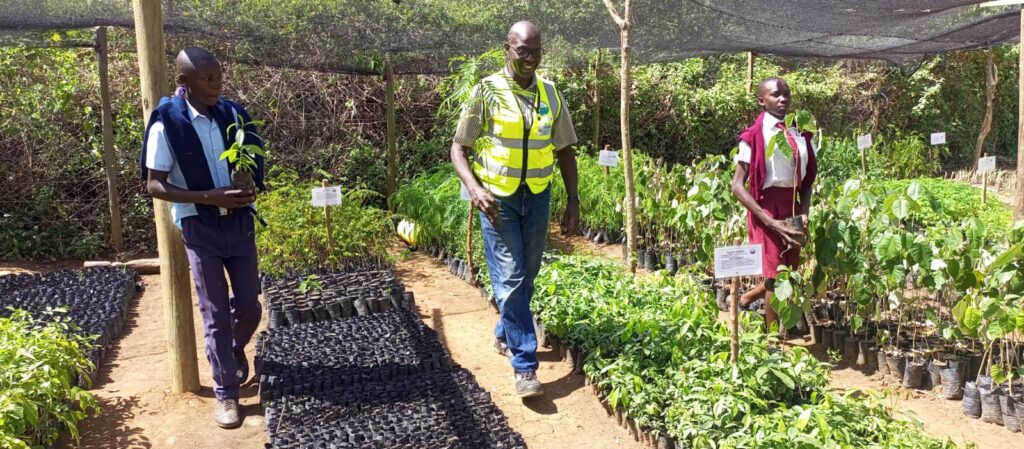A time like this, about a decade ago, thick smoke would be spotted bellowing atop trees in the vast Utonga Peninsular. Men and women would be ferrying sacs of charcoal from the forest, as others would be giving chase to the mammals housed by the ecosystem.
Herders would be making their way in out of the forest with firewood, while some would be using machetes to penetrate the thick forest to make way for their grazing livestock.
However, today, part of the peninsular has turned into a research, education and hospitality centre hosting various carders of nature enthusiasts.
When Lake Region Bulletin team visited Utonga Nature Conservancy located 17 kilometres South West of Bondo town, in Siaya County, there were students from five neighboughring schools.
The entire day, the over 70 children, accompanied by their teachers, were busy taking notes as the conservancy staffs took them through the vast indigenous forest. They moved from one corner to the next, asking questions and recording their experiences.
We have planted over 30 trees in our school, and we hope with time we can emulate what is taking place here
Faith Pendo, Captain Young Farmers’ Club, Nyandusi Primary School
They would then gather at one of the corners to plant trees to commemorate this excursion. This is common here, as learners from various education levels visit for academic, research and social reasons.
“These are students who belong to environment and conservation clubs within their school, and they are here to learn,” said William Omamo, facility CEO.
“Our coming here is to put into perspective some of the interventions that our students have been practicing in school,” said Mr Dancan Olambo, a teacher at Sinyanya Primary School, and the patron of the school’s Environment Club.

Learners having practical experience
According to Mr Olambo, apart from learning, the students also get tree seedlings from the conservancy which they plant in their school.
Just like Mr Olambo, Tonny Ochieng, a teacher at Magawa Primary School had also brought 14 students for the educational excursion.
“Some of the indigenous trees found here are extinct in the village, so this is an opportunity for the children to see the trees, and learn their local names,” said Ochieng, the Club’s Patron.
Faith Pendo is the Captain for Young Farmers’ Club at Nyandusi Primary School. The club focusses on not only environmental conservation, but also sustainable agriculture.
“We have planted over 30 trees in our school, and we hope with time we can emulate what is taking place here,” she said.
Her sentiments are shared by her counterparts; Victor Moses and Erick Onyango from Goma and Kapiyo Primary Schools, respectively.
“We understand that for a better life now and in the future, we must protect our environment,” said Ochieng.
“This experience make us appreciate the value of nature, and the aim of our club is to do all we can to ensure we play a role in contributing to the well being of our environment,” added Moses.
Such excursions have escalated for the past one year as Utonga Nature Conservancy takes its place in the restoration of the peninsular.
This peninsular is slowly breathing life following interventions by the communities around here.

The peninsular covers over 1, 200 acres of land bordering Lake Victoria. Utonga Nature Conservancy which covers 75 acres was however launched last year following years of restoration efforts.
Sustainable interventions
According to Mr Omamo, the restoration project was birthed following invasion of the indigenous forest by poachers, loggers and charcoal burners.
The first step was to secure the area and turn it into a nature conservancy, before roping in stakeholders to contribute to its restoration.
The conservancy is home to over 30 mammals, 45 indigenous tree species, and over 150 bird species.
“We have three thematic areas; Conservation and Climate Action, Agroforestry and Social Enterprise, and Culture and Heritage,” said Omamo.
Through conservation and climate action, the conservancy is implementing strategies for protection of the various species of fauna and flora, restocking it, and providing evidence based interventions aimed at giving life to that nature.
Agroforestry and social enterprise target to empower the community on how to practice agroforestry for economic benefits, while the culture and heritage aspects focus on using positive cultural opportunities to promote nature conservation.
The conservancy management has since signed Memorandum of Understanding with a number of learning and research institutions for education and research collaborations.

“We are targeting to initiate and strengthen environmental clubs in 60 schools within this year, and that would see at least 30, 000 students enrolled in the program. Apart from being trained and capacity-built on the conservancy issues, they will also be involved in active conservation,” said Omamo.
The management is exploring economic potentials in the hospitality and tourism industry, which Mr Omamo says will make the conservancy self reliant in its nature conservation visions.
“Once we have proper inventories of the fauna and flora here, we look at establishing eco-friendly hospitality infrastructure which will provide an array of tourism products in addition to educational packages,” he said.
Richard Arunga, Siaya County Forest Conservator says the county has a tree cover of 5.27 per cent, and forest cover of 0.23 per cent.
He notes that interventions such as that by Utonga community is in line with the government agenda of increasing forest cover to 10 per cent, and planting 15 billion trees by 2032.
“Conservation is not a one man show, and this is why we are looking at collaborations which have positive impact like this one,” he said.
Currently, Siaya County has just about 460 hectors of gazetted forest area, comprising of 399.5 hectors at Got Ramogi, and 62.5 hactors at Got Abiero.
Mr Arunga notes that the county has 17 other hills covering over 1, 400 hectors of land, which if gazetted would help increase the county’s forest cover.
He said the county targets to plant 15 million tree trees annually for the next ten years through collaborations with the various stakeholders.
“We are already in massive tree seedlings propagation, and this year alone we have planted over 160, 000 trees. Once we onboard all the schools around, we expect to raise the numbers as each school will be having tree planting projects twice a year during the two rainy seasons in April and October,” he said.
Additional reporting by Kevine Omollo

This is just amazing what the schools around Utonga are doing…Keep up the great work guys.